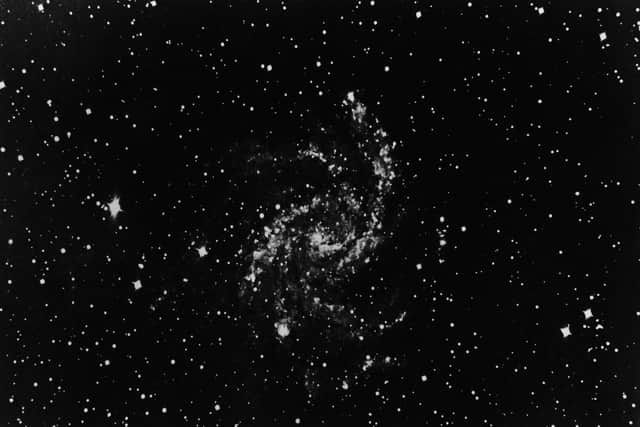Why Albert Einstein's theory of gravity could be about to bite the dust – Dr Benjamin Giblin
Their focus is on analysing how the shapes of millions of distant galaxies appear to be distorted by the bending of light as it travels to our telescopes, a phenomenon known as ‘gravitational lensing’. This happens because the gravity of the unimaginably large ‘cosmic web’, the vast structure that links far-flung galaxies with each other, warps space and time.
This web spreads throughout the universe and is made of two core ingredients: ‘ordinary matter’ in the form of galaxies (each of which might contain billions of stars), gas and dust; and that mysterious, invisible component, ‘dark matter’. Although the latter can’t be seen by the strongest telescopes, its presence in the cosmos can be inferred from its contribution to gravitational lensing.
Advertisement
Hide AdAdvertisement
Hide AdBy bending the light from distant galaxies, dark matter reveals itself, in a sense leaving its fingerprints on the cosmic crime scene. Using gravitational lensing, we can measure the amount of dark and ordinary matter. And by comparing this with results obtained from other astronomical observations, we can confirm whether our understanding of gravity and its effect on light, based on Einstein’s theory of general relativity, really is as accurate as we think.
But there lies the conundrum. Results using gravitational lensing are different from those obtained by astronomers studying what’s called the ‘cosmic microwave background’ – the radiation left over from the Big Bang which can also be used to measure the abundance of dark and ordinary matter in the universe.
The discrepancy in results from these two different ways of observing the universe isn’t large enough for us to declare something is genuinely amiss in Einstein’s theory of gravity. Remember, every scientific measurement involves a margin of error, and these particular margins are relatively large.
But we believe two new telescopes are about to revolutionise the field: the Euclid space telescope and the Vera C Rubin Observatory. Euclid is being built by the European Space Agency with contributions from Nasa. The consortium behind it consists of more than 2,000 scientists from 300 institutes in 13 European countries, and it is expected to be launched this summer. The Vera C Rubin Observatory, on Chile’s Cerro Pachón mountain ridge, will begin taking data later this year.
It is expected these instruments will finally manage to accurately test gravity and measure the amount of ordinary and dark matter, using gravitational lensing, with unprecedented precision, meaning the margins of error will be much smaller. If the data gathered from these telescopes leads to even greater discrepancies in the results, then astronomers will be faced with a milestone possibility: that Einstein’s theory of gravity fails to describe how it behaves over the cosmos’s vast expanses.


Just as cracks appeared in Newtonian gravity when it failed to explain the motion of the planet Mercury (a mystery eventually solved by Einstein’s ideas), we could be seeing the beginning of another great theory biting the cosmic dust.
Dr Benjamin Giblin is a researcher at the universities of Edinburgh and Barcelona and a recipient of the Royal Society of Edinburgh’s Saltire Early Career Fellowship. The RSE, Scotland's national academy, is on Twitter at @RoyalSocEd
Comments
Want to join the conversation? Please or to comment on this article.